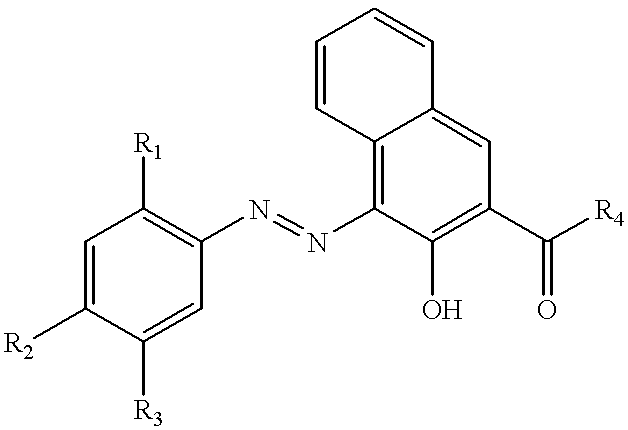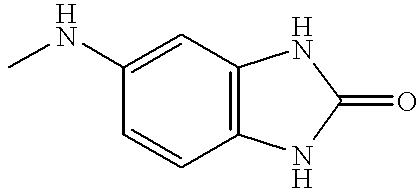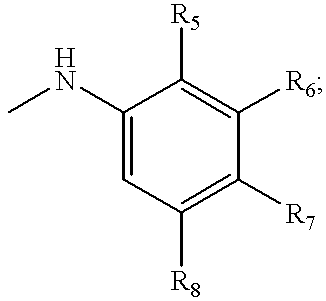As a result, further higher functionality is required of a toner, it is a present state that a better image forming apparatus cannot be accomplished without realization of further improved toner performances.
For such an abutting transfer device, the sphering of a toner particle shape is effective for providing an improved transferability and enhancing the durability against mechanical stress exerted by the device, but on the other hand, this results in smaller specific surface area and volume of toner particles, so that the dispersibility of a colorant inside the toner particles seriously affects the transferability and matching with the transfer device of the toner particle.
Such a non-contact charging means is very effective as a means for uniformly charging the image-bearing member surface to a desired potential but leaves problems regarding
size reduction of image forming apparatus, use of lower-
voltage power supply, prevention of
ozone generation, and longer life of photosensitive drum and charging device.
However, it is difficult to maintain such a good contact state between the charging member and the charged member, thus being liable to result in image defects due to charging failure which has been left as a problem to be solved.
For example, if transfer residual toner remaining on the photosensitive drum surface is attached to the charging roller surface, the roller
surface resistivity is locally increased to fail in uniform charging of the photosensitive drum surface, thus resulting in image defects, such as image
fog,
image density irregularity and streak image defects in worse cases.
The above-mentioned problems become pronounced in the case of using a small
diameter photosensitive drum for which improvements in cleaning of transfer residual toner and intimate contact between the charging member and the drum as the charged member are difficult, or in the case of using a higher process speed, and have provided technical obstacles against the use of smaller image forming apparatus, and a lower
voltage supply, a higher
image quality and a higher durability.
Moreover, these problems are pronounced in the DC-charging scheme showing less
smoothing effect compared with the AC-charging scheme and are liable to be pronounced in a low temperature / low
humidity environment.
This is liable to be accompanied with difficulties, such as a larger size fixing device and longer start-up preheating time.
However, such a toner having a higher affinity with a fixing roller is liable to cause an offset phenomenon, i.e., transfer of the toner onto the fixing roller surface at the time of fixation, which is liable to be caused remarkably at the time of full-
color image formation.
The above method is very effective for preventing the offset phenomenon but is accompanied with difficulties such that (1) the inclusion of a device for applying the offset-preventing liquid results in complication of the fixing device, thus obstructing the designing of a small-size and inexpensive image forming apparatus; (2) the applied offset-preventing liquid sinks in the fixing roller, thus being liable to induce peeling between the respective
layers constituting the fixing roller and shorten the life of the fixing roller consequently; (3) the offset-prevention liquid attached to the fixed image provides a sticky touch to the fixed image and results in a lowering in transparency of the fixed image when a transparent film is used as the transfer film for an overhead
projector (OHP), thus obstructing the
reproduction of a desired roller; and (4) the offset-preventing liquid is liable to soil the interior of the image forming apparatus.
Among these transfer materials, some are liable to cause separation of the ingredients.
The diversity of transfer materials seriously affects the fixing device, thus obstructing the smaller size and longer life of a fixing device.
Further, in some cases, some soiling substance originated from a transfer material forms a lump together with a toner, which sticks to the fixing roller, thus lowering the performance of the fixing device and impairing the
product image quality due to peeling thereof.
Regenerated paper for general office use contains more than 70% of regenerated pulp from used paper of newspaper, and the content thereof is assumed to further increase, thus being liable to result in the above-mentioned difficulties.
Further, in the case where the heating roller is equipped with a cleaning member for removing the fixing residual toner from its surface or a separation member for preventing the winding of the transfer material, it has been confirmed that the fixing roller surface is damaged with
scars or abrasion or the functions of the cleaning member and the separation member are remarkably lowered due to medium-quality pulp
fiber contained in
paper dust liberated from regenerated paper from medium quality used-paper, such as that of newspaper or magazines.
The above difficulties are liable to be serious in the case of using a fixing device using no or only a small amount of offset-preventing liquid.
As noted above, however, the application of an offset-preventing liquid onto a fixing roller surface of a fixing device is accompanied with several problems in
spite of effectiveness thereof.
In this case, in order to exhibit a sufficient effect, such a
wax component has to be added in a large amount to the toner, and other difficulties, such as filming on the photosensitive member and soiling of the toner-carrying member, such as a particulate carrier or a sleeve, are liable to occur, thus causing image deterioration.
Particularly, in the case of full-color
image formation, the problem of inferior transparency or
haze of the fixed image of the fixed image on a transparency film as a transfer material has not been solved.
However, such colorants as mentioned above do not necessarily satisfy all requirements for providing a
magenta toner.
Particularly, many colorants for a
magenta toner have poor dispersibility so that the dispersed particles thereof are liable to scatter incident light to result in lower transparency of fixed image and lower color reproducibility.
However, any of the toners containing the above-mentioned colorants have almost failed to pay consideration to influence of the colorants onto the abutting transfer performance and heat-pressure fixing performance.
In excess of 50,000 ppm, the .beta.-naphthol derivative per se is liable to adversely affect the tint and chargeability of the toner, thus causing inferior color reproducibility,
fog and also lower resolution of the
resultant images, so that it becomes difficult to obtain high-definition images.
Further, the toner performances are liable to be effected by environmental conditions, and it becomes difficult to achieve the matching with the image forming method.
If the content of the
aromatic amine exceeds 200 ppm, the chargeability and the transferability of the
resultant toner are lowered, thus being liable to result in
fog and soiling of images.
It becomes also difficult to achieve the matching with the image forming method.
in. Below 1 wt. part, it becomes difficult to sufficiently achieve the function thereof as the colo
rant. On the other hand, in excess of 20 wt. parts, the colorant is excessively present in the toner particles, thus causing reagglomeration of the col
orant. As a result, the fixability and chargeability of the toner, and also the transparency for OHP use, are adversely affected, and it becomes also difficult to achieve the matching with the image forming app
On the other hand, in the case of using a very low concentration of reaction liquid for obviating the
precipitation of the hydrochloric salt, it is difficult to ensure a commercially feasible level of productivity.
Quinacridone pigment compositions generally exhibit very strong agglomeratability, and many of them are difficult to uniformly disperse in a toner.
If Tg is below 40.degree. C., the resultant toner is liable to have problems regarding the storage stability and continuous image forming performances.
On the other hand, if Tg exceeds 75.degree. C., the resultant toner is liable to have a higher fixing temperature, thus being liable to cause inferior fixability and color reproducibility.
in. Below 1 wt. part, the state of presence of the polar resin in the toner particles is liable to be non-uni
rfaces. In both cases, it becomes difficult to control the state of presence of the monoazo
pigment composition (and the
quinacridone pigment composition) in the toner particle, thus being liable to fail in sufficiently attaining the functions of the pigment comp
Further, it is also possible to prevent the soiling and damage with the colorant of the image-bearing member and the intermediate transfer member, leading to image defects.
If the inorganic
fine powder has a specific surface area of below 30 m.sup.2 / g, it is difficult to impart a sufficient flowability to the toner, and the effect of preventing soiling with the colorant of the toner-carrying member is lowered.
On the other hand, if S.sub.BET is above 400 m.sup.2 / g, the inorganic
fine powder is liable to be embedded at the toner particle surfaces, thus rather lowering the toner flowability in some cases.
If the amount of the inorganic
fine powder is below 0.3 wt. part (per 100 wt. parts of the toner particles), a sufficient effect of the addition is difficult to attain.
In excess of 8 wt. parts, the toner is liable to be inferior in fixability and chargeability, and an increased amount of isolated inorganic fine
powder is liable to obstruct the matching with the image forming apparatus.
Accordingly, in the case of producing toner particles by
polymerization by dispersed droplets of a polymerizable
monomer composition containing a pigment in an
aqueous dispersion medium, if a monoazo pigment composition or a
quinacridone pigment composition is present alone, the pigment composition is moved to the boundary between the polymerizable
monomer composition as the dispersed phase and the
aqueous medium and is liable to cause reagglomeration in the vicinity of the toner particle surface.
As described above, such reagglomerate of the monoazo or
quinacridone pigment composition is liable to adversely affect the chargeability and charging speed of the resultant toner particles and obstruct the matching with the image forming apparatus.
An excessively higher Tg is not preferred because when a color toner for full-color
image formation is produced, the resultant toner is liable to show a lower color mixability with other toners and a poor color reproducibility, and also exhibit a lower transparency for OHP use.
Further, the cleaning failure of the intermediate transfer belt is liable to occur due to insufficient back-transfer of transfer residual toner after the secondary transfer, thus being liable to leave a ghost in a subsequently formed image in continuous
image formation.
This problem is liable to be pronounced particularly in a
digital image forming apparatus of 600 dpi or higher.
Below 1.times.10.sup.6
ohm.cm, it becomes difficult to obtain a sufficient transfer
electric field, thus being liable to cause a problem regarding image reproducibility.
In excess of 8.times.10.sup.13
ohm.cm, a high transfer
voltage becomes necessary, thus requiring a large bias voltage supply and incurring a cost increase.
Above 4000 Mpa, the belt becomes excessively rigid, thus being liable to obstruct the smooth rotation and cause toner sticking.
Below 5%, the belt becomes excessively brittle, thus being liable to be broken at some elongation and exhibit a
short life when placed under tension for a long period.
A breakage elongation over 850% is excessive, thus being liable to cause elongation resulting in color deviation at the time of rotation of the transfer belt and also toner sticking.
A thickness below 40 .mu.m is liable to cause
instability of shaping resulting in a belt showing a thickness irregularity and insufficient durable strength, thus causing the breakage or
cracking of the belt in some cases.
A thickness above 300 .mu.m causes a substantial
peripheral speed difference between the inner and outer surfaces at a position around the tension
drive shaft, thus being liable to cause image scattering thereon due to shrinkage of the outer surface.
Further, it also causes difficulties, such as lowering in flexural durability, excessively high rigidity of the belt causing an increase in drive torque, and larger size and cost increase of the entire apparatus.
Accordingly, if some toner particles constituting the previously transferred toner image are in a non-stable charge state, the toner particles are liable to be transferred onto the subsequent photosensitive drum, thus causing a so-called "re-transfer" or "back-transfer" resulting in inferior
image quality.
Hitherto, such an offset-preventing liquid has been used also for surface protection of the heating roller and the pressure roller, and if the supply rate is set within the above-mentioned small supply rate range, the function thereof has been insufficient, thus being liable to result in damages, such as
scars and peeling, and also lowering in releasability caused thereby, on the surfaces of the heating roller 211 and the pressure roller 212.
By using such states of heat-pressure means, transfer materials are liable to be wound about the heating roller or pressure roller, and if separation means, such as the above-mentioned separation claws are removed, severe problems are liable to be caused.
Particularly, in the case of using regenerated paper or applying little offset-preventing liquid, the heating roller 211 and the pressure roller 212 are liable to be damaged, so that the thermal degradation is promoted to result in serious problems due to a lowering in releasability of the roller surface.
Accordingly, if the charging roller is not strictly straight along its length, the resultant images are liable to be accompanied with density irregularities between the parts corresponding to the central part and both ends of the charging roller.
If the resistivity is 10.sup.8
ohm.cm or higher, the charging roller is caused to have a lower charging performance, so that uniform charging of the photosensitive member becomes difficult.
If the resistivity is lower than that of the elastic layer, it becomes difficult to prevent charge leakage due to pinholes or
scars possibly present at the surface of the charged member.
Above 10.sup.15 ohm.cm, the charging performance of the charging roller is lowered, so that uniform charging becomes difficult.
Outside the range, it becomes difficult to provide a uniform charging performance.
Below 0.5 mm, the elastic layer is liable to fail in exhibiting an appropriate degree of elasticity, so that it becomes difficult to accomplish uniform and intimate contact, and also a uniform charging performance.
At a smaller thickness, the
layer thickness irregularity is liable to occur in preparation of the charging roller, and the unevennesses of the elastic layer is liable to appear in the charging roller surface as they are.
As a result, the uniform intimate contact characteristic is impaired, to be liable to fail in exhibiting uniform charging performance, and transfer residual toner particles and external additive are liable to be attached to the charging roller surface.
On the other hand, at a larger thickness, the appropriate degree of elasticity provided to the elastic layer is impaired, so that the intimate contact with the charged member is impaired, thus being liable to fail in exhibiting uniform charging performance.
Even when a charging roller as described above is used, as the degree of uniform and intimate contact between the charging roller and the photosensitive member is enhanced for the purpose of improved uniform charging of a photosensitive member, it becomes difficult to maintain a
good image forming state realized at the initial stage for a long period as the attachment of transfer residual toner and external additive becomes severer with
contamination of the image formation.
As a result of our further study, it has been discovered that the above difficulties, particularly the attachment onto the charging roller, is greatly associated with the shaping accuracy, surface
frictional coefficient and
surface roughness of the charging roller in addition to the species and dispersion state of the colorant in the toner.
Under this state, transfer residual toner is liable to intrude the gaps and be irregularly attached to soil the charging roller, thus causing image failure.
According to us, it is difficult to finish the outer shape of the charging roller at a high accuracy by the
traverse scheme, and even if possible, a very long time is required for the finishing of a charging roller.
If the roller
hardness is below 35 deg., the charging roller is liable to come off the
grindstone during the
grinding, thus making it difficult to achieve a high-accuracy finish.
On the other hand, above 75 deg., it becomes difficult to ensure the uniform and intimate contact between the charging roller and the photosensitive member, thus being liable cause charging failure.
Above 1.00, toner is liable to attach to the roller surface, and once attached toner is not readily liberated to cause charging failure.
If substantial unevennesses are present at the charging roller surface, the toner intrudes thereto to cause surface soil, and once attached toner is difficult to remove physically.
Further, if the charging roller surface is rough, some charging irregularity is liable to occur due to surface unevennesses thereof, thus being liable to result in image failure.
 Login to View More
Login to View More  Login to View More
Login to View More 


